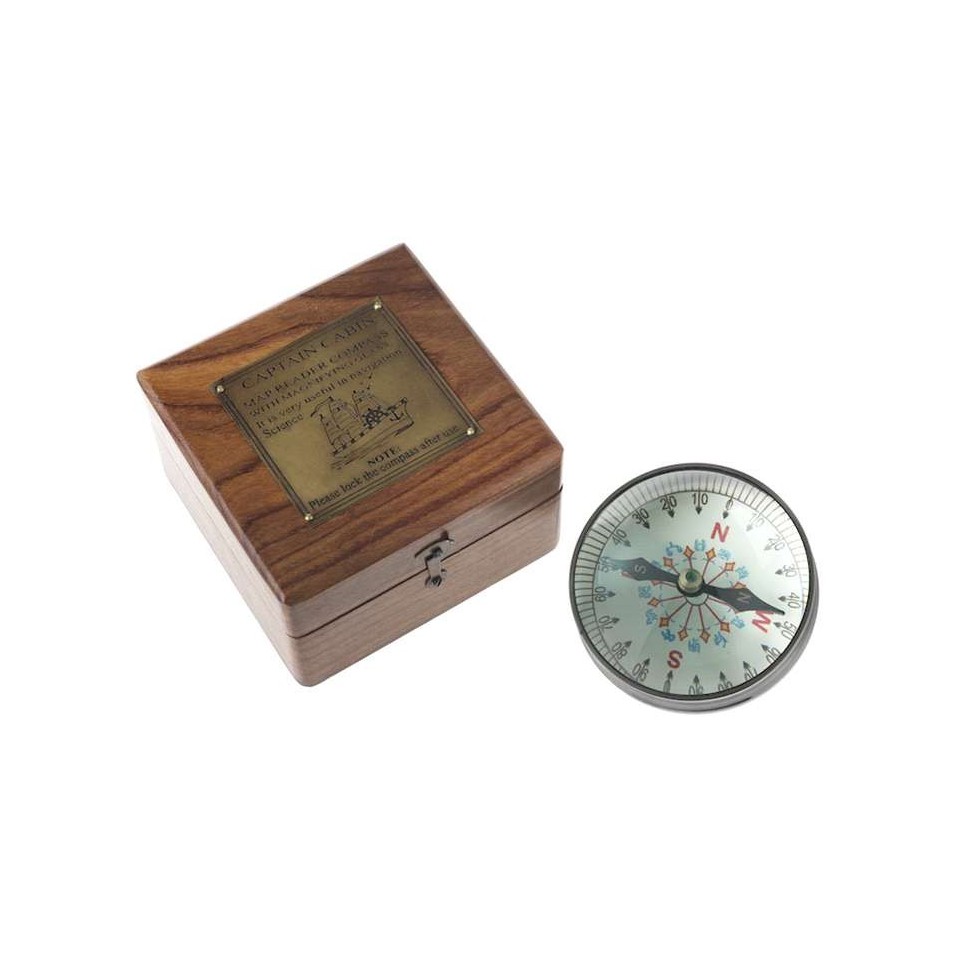

| Los pedidos realizados el día 25 de Julio, se procesarán el día 26 por fiesta local. |


Antiqued brass compass with glass magnifier and rosewood box.
The compass (from the Latin "passus" ("step")) opened up the world to exploration and discovery. The principle of the magnetic needle was already known to the Chinese in the 3rd century BC and was first used by feng shui priests to tell them where and how to build. It was adapted to maritime navigation by Chinese sailors around the year 1000. The first compasses comprised a magnetic needle floating in a bowl of water, with the needle suspended on a thread or threaded through a reed. The Arabs perfected this by mounting the needle on a pivot. The compass arrived in Europe between the 10th and 11th centuries, enabling sailers to cross the oceans and explorers to discover the continents. The first instrument to resemble the modern compass is attributed to Portuguese citizen Ferrande (1483). Antiqued brass compass with glass magnifier and rosewood box.
Tide movement.
Wooden wall clock with a nautical design of a windrose. It works with a AA battery which is not included.
BRUNTON Pocket Transit compass. Working reproduction of the pocket transit compass invented by mining engineer D.W Brunton in 1894.Brass compass presented in lovely sheesham wood box with brass anchor motif inlay. The two rotating bubble levels give the declination angle reading. The needle is automatically blocked when the lid is closed.
IMEX Marine high precision tide indicator. An indispensable instrument to know the level of the tides throughout the year and to be able to enjoy the sea or the beach at high or low tide hours. Once you receive the instrument, adjust it to the tide times of the place where you are during the full moon. The tide indicator only needs to be adjusted once at...
Antiqued brass pocket compass with chain. Comes with velvet bag.
SHIP WHEEL CLOCK. Elegant ship wheel clock for the office in brass suspended on a wooden base. Elegant nautical object.